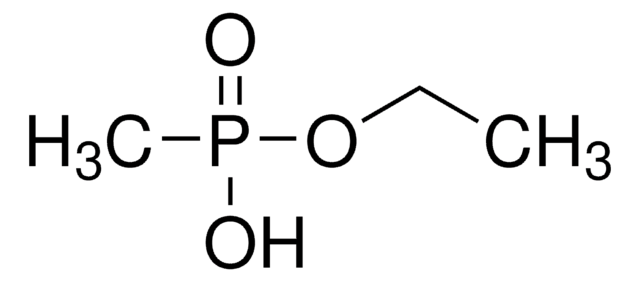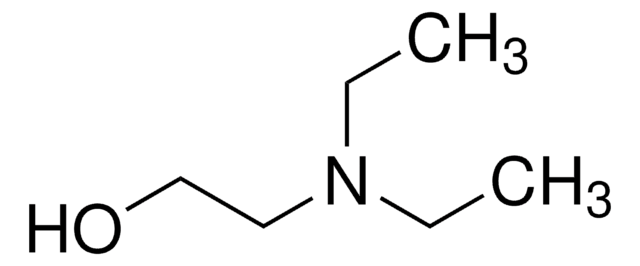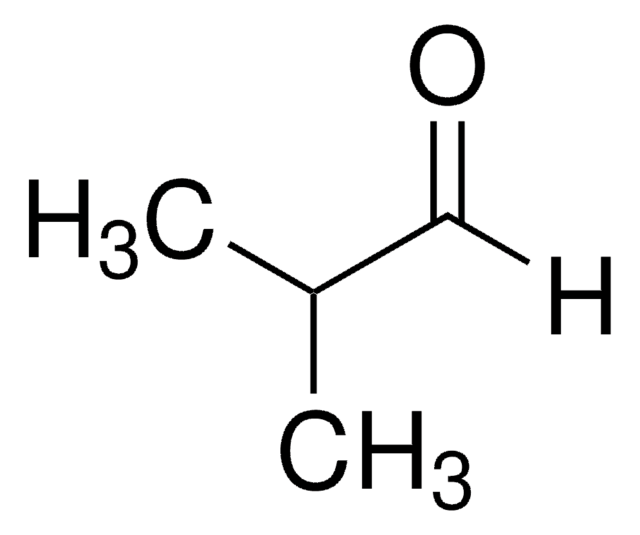386588
Pinacolyl methylphosphonate
97%
동의어(들):
1,2,2-Trimethylpropyl methylphosphonate, 3,3-Dimethylbutan-2-yloxy(methyl)phosphinic acid, Mono(1,2,2-trimethylpropyl) methylphosphonate, O-Pinacolyl hydrogen methylphosphonate, O-Pinacolyl methylphosphonate, PMPA, Pinacolyl hydrogen methylphosphonate, [(3,3-Dimethylbutan-2-yl)oxy](methyl)phosphinic acid
로그인조직 및 계약 가격 보기
모든 사진(1)
About This Item
Linear Formula:
CH3P(O)(OH)OCH(CH3)C(CH3)3
CAS Number:
Molecular Weight:
180.18
MDL number:
UNSPSC 코드:
12352100
PubChem Substance ID:
NACRES:
NA.22
추천 제품
신호어
Warning
유해 및 위험 성명서
Hazard Classifications
Acute Tox. 4 Oral - Skin Irrit. 2
Storage Class Code
10 - Combustible liquids
WGK
WGK 2
Flash Point (°F)
165.2 °F - closed cup
Flash Point (°C)
74 °C - closed cup
가장 최신 버전 중 하나를 선택하세요:
시험 성적서(COA)
Lot/Batch Number
Sung-Up Choi et al.
Journal of pharmaceutical sciences, 97(2), 931-943 (2007-06-05)
We have investigated the ability of lipid-indinavir particles composed of 3-to-1 lipid-drug molar ratio to encapsulate an aqueous marker calcein and anti-HIV drug (3)H-phosphonylmethoxypropyl-adenine (PMPA). Even at a high density of indinavir associated to lipid-indinavir nanoparticles, they form an enclosed
Manisha Sathe et al.
The Analyst, 137(2), 406-413 (2011-11-19)
Immunoassay detection of O-pinacolyl methylphosphonic acid (PMPA) employing direct coating of N-2-aminoethyl-O-pinacolyl methylphosphonate (hapten B) on microtiter plates is reported. Coating was achieved by covalently linking hapten B to a glutaraldehyde (GA) polymer network directly bound to the polystyrene (PS)
B Rosenwirth et al.
Journal of medical primatology, 28(4-5), 195-205 (1999-12-11)
Combination chemotherapy using potent anti-retroviral agents has led to significant advances in the clinical management of human immunodeficiency virus (HIV) disease. However, the emergence of multiple drug-resistant mutants, the high need for compliance to adhere to demanding drug-dosing schemes, and
Looking down the drug pipeline.
J Cadman
GMHC treatment issues : the Gay Men's Health Crisis newsletter of experimental AIDS therapies, 12(3), 5-9 (2001-05-22)
Harri Koskela et al.
Analytical chemistry, 90(14), 8495-8500 (2018-06-12)
The NMR-observable nuclei of the acidic and basic compounds experience pH dependence in chemical shift. This phenomenon can be exploited in NMR titrations to determine p Ka values of compounds, or in pH measurement of solutions using dedicated pH reference
자사의 과학자팀은 생명 과학, 재료 과학, 화학 합성, 크로마토그래피, 분석 및 기타 많은 영역을 포함한 모든 과학 분야에 경험이 있습니다..
고객지원팀으로 연락바랍니다.








